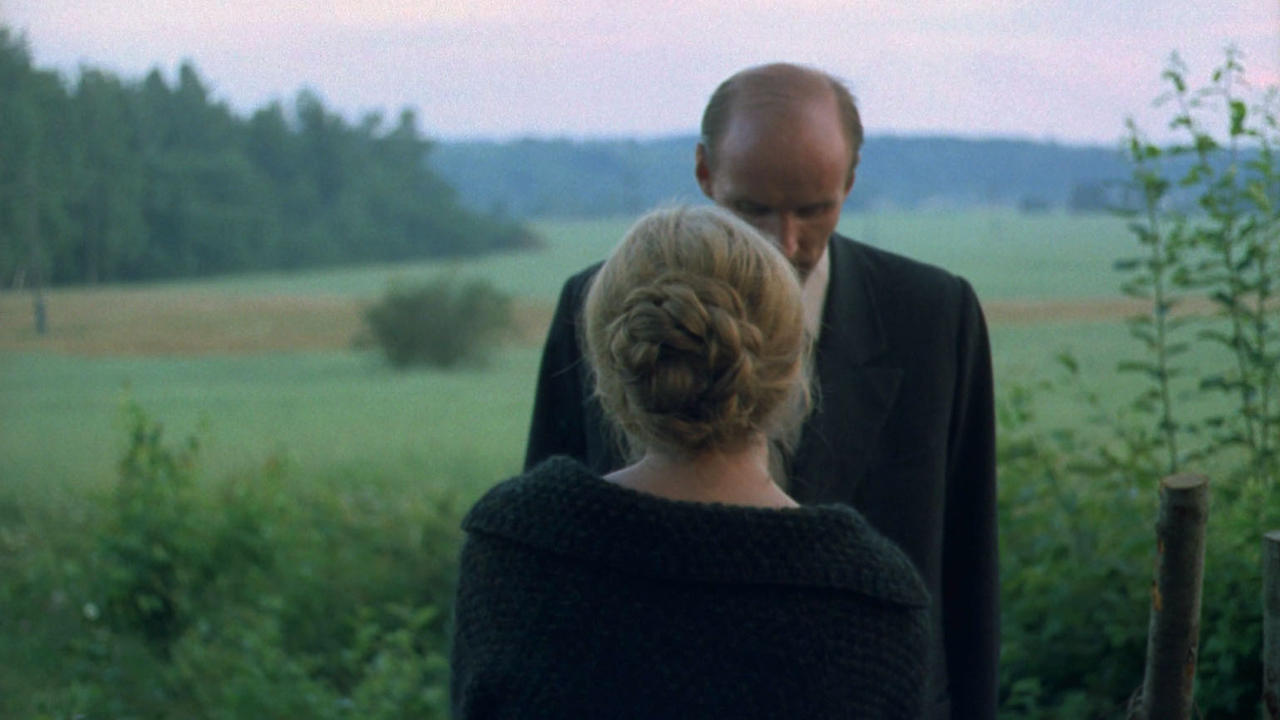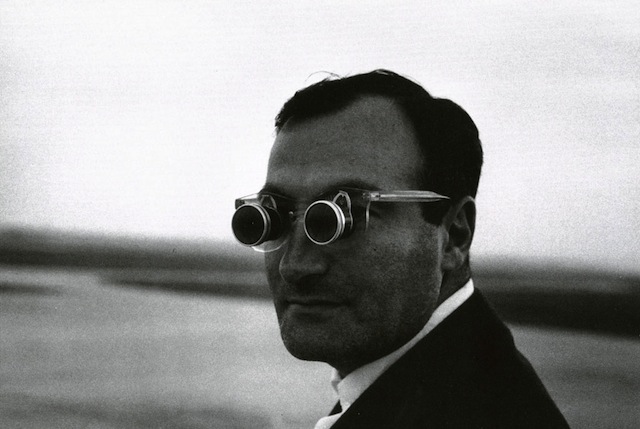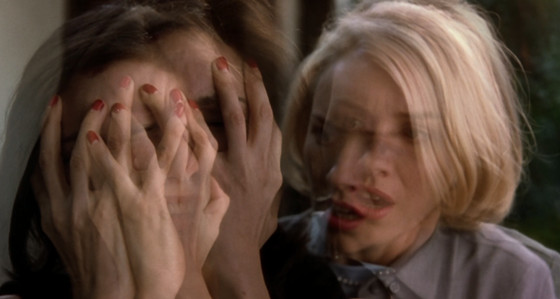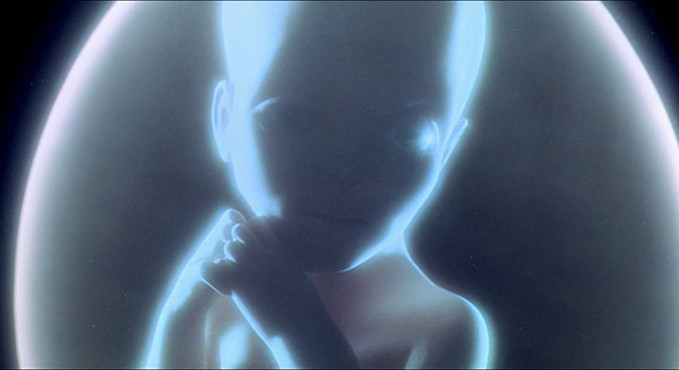5. The Mirror (1974)

Famous for his deep philosophical moving paintings, Andrei Tarkovsky presents in “The Mirror” his most personal work, and his most difficult. But how can such a personal piece be relevant and appreciated, and yet so relatable in its nostalgic lyricism?
An exercise on memory, on life, on family, and on childhood. Tarkovsky utilizes the flashback as the main narrative channeling device, as there is no straight plot that can be deconstructed. Contrasting with most of the movies referred on this list, this is not necessarily an intellectual piece.
It seems that Tarkovsky is aiming more at a spiritual and emotional plain, something that even in his own impressive filmography has never done to this extent. He purposely created this complex and cryptic narrative because he believed that the movie’s plot was not really what mattered. It was the images and what they can transmit to the viewer. Images that describe deep nostalgia, longing, trauma, memory, things that are hard to put into character dialogue.
It’s a movie that is not expected to be appreciated by everyone, but one of tremendous poetic power. The humanity it transfers into cinema transcends the physical and the obvious. Its dreamlike logic, its breaking of time, its flowing political references to its country all leave the viewer with a hazy look when the movie rounds up, as if the viewer has awakened from a deep sleep.
It is a monolith in arthouse cinema, a lesson in poetry as a moving image, and a piece of work that truly depicts what’s spiritual and emotional about art instead of reducing it to mere technique.
4. La jetée (1962)

Deeply experimental and bold in its approach to the narrative process, the 1962 “La jetée” is one of the most unique movies of all time. One that is nonlinear in plot and therefore incredibly puzzling to follow, also because of the stunt that is its diegetic device.
The movie is composed of various photographs along with music and a narrator, avoiding natural cinematic movement and creating a distance that can hinder the engagement of the viewer, as they are used to with supposedly “normal” features. Nevertheless, it is an incredible piece of work that creates an interesting world and takes on stimulating concepts with its singular approach to cinema.
It is a movie that touches the subject of love, of future memory, and of the evolution of society on Planet Earth. It is a consciously confusing movie that will not please every single viewer, but the questions it asks will provide plenty of discussion for the years to come, not only due to their mysterious nature but due to their relevance to what we are experiencing in today’s world.
This is the movie that inspired Terry Gilliam’s “12 Monkeys,” but despite it being far less known, it is arguably more impactful and was more influential than Gilliam’s piece, however good of a movie it may be.
Chris Marker went on to be successful in making documentaries, but his artistry surpassed cinema (with movies like “Sans soleil”), as he was a praised photographer (obviously) and ist. His movie remains as an interesting take on dystopias and a fascinating piece to dwell on with some deep research.
3. Persona (1966)

For being deceivingly simple or seemingly pretentious, this is one of the most mystifying movies created by the great master Ingmar Bergman, as well as one of the most beautiful and one of the most complex. While being worth watching for the intriguing and iconic imagery presented by the beautiful cinematography of Sven Nykvist, the movie’s rich meta-cinema imagery and undertones make this arguably the most difficult of Bergman’s movies.
The ideas of the movie revolve around the idea of acting, playing a role. Around creating a fantasy, the connection between what is real and what is not real are all depicted visually with experimental shots that are cryptic if you are following the already mysterious main plot line.
The dynamics created by both actresses in the movie (Liv Ullmann and Bibi Andersson) can easily distract the viewer from these underlying but enriching sub-themes that are ingeniously inserted in the movie.
It is an intellectual piece that leaves many doors open to interpretation, even in its supposedly straightforward main plot. It is one of the essential arthouse movies that has some of the best female performances of all time, and many iconic shots and ideas that were really influential regarding thrillers that followed it. A cinematic experience not to be missed by movie lovers.
2. Mulholland Dr. (2001)

Trying to deconstruct a thriller (as in solving its narrative) is something that movies from the ‘90s to modern day sadly induce the viewer to do. But thankfully, this movie remains as one of the most gripping pieces of cinema ever made while being appropriately subtle and complex in the way it depicts its plotlines, leaving the right amount of cinematic magic and mysticism to generate what can be considered as real art in cinematic form.
It remains as a thriller feature that pokes at the viewer with its questions. But while others answer those questions in what we define nowadays as a (ambiguous or not) plot twist, David Lynch mystifies his plot that, while well-accomplished and unbroken, gives a great new dynamic when playing with mainly two genre tropes: the idea of mystery and narrative composition.
With its complex mixture of symbolic imagery, and while working with the already self-conscious themes of the business of movies and Hollywood life, “Mulholland Dr.” is either a movie that you will leave you stunned with its juxtaposition of narratives and the possibilities that will leave to interpretation, or will leave you frustrated and waiting for a straight-up answer.
Nevertheless, its cinematography, sound design, and camerawork will leave you filled up to the brim, satisfying your urge for the simple beauty cinema can bring, even when the movie descends deep into its dark rabbit hole.
1. 2001: A Space Odyssey (1968)

How can one of the most famous movies ever made be as awe-inspiring, dynamic, and intricate as this Stanley Kubrick masterpiece? This movie is proof that even the most casual of moviegoers sometimes has the need to experience something that transcends the canonical narratives and enters the realm philosophical, the realm of authentic cinema and what it can do as an artform.
The movie is exposed very slowly and with the hints that we take for granted in an arthouse piece. It has a grand feel to it when it creates the beautiful harmonies between the music and the images in a fashion no other sci-fi movie ever could so since then, despite how ambitious its world can be.
However, it is not only in the way it’s presented that the viewer can find difficult: it is the complex themes and ideas it displays. The completely cinematic representation of technology, humanity, and evolution, as well as the relationship between these concepts, contribute to the impressive scope of the movie.
While it is one of the most influential movies of all time, and one of the most referenced in the sci-fi genre, it is mentioned often as one of the great philosophical cinematic pieces of the 20th century, and therefore often mentioned as one of the most intellectual when it comes to movies as famous as this one.
Honorable Mentions: The Color of Pomegranates (1969), Man With a Movie Camera (1929), An Andalusian Dog (1929), Inland Empire (2006), Testament of Orpheus (1960), F For Fake (1973), Post Tenebras Lux (2012), Tropical Malady (2004), The Holy Mountain (1973), Solaris (1971), 8½ (1963)